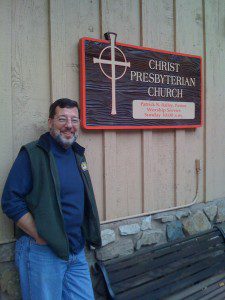
30 Mar REV. PAT BAILEY: EVOLVING LANDSCAPES, EASTER
Editor’s note: Rev. Pat Bailey, pastor of Telluride’s Christ Presbyterian Church, takes a developmental and evolutionary view of faith, spirituality, and religious community. Join him for his weekly blog as he explores the ever-changing landscapes of perspectives and consciousness and discusses both the challenges and promise of trying to make meaning in our evolving social context.

Pastor Pat Bailey
Christian tradition sees the resurrection narrative that is celebrated on Easter as the decisive turning point of human history. This claim, however, is most often made from a mythological frame of consciousness. That means that it is understood mostly in terms of externals: Jesus is materially raised from the state of bodily death and thereby ensures the triumph of faith, believers, and church.
Taking an evolutionary view, I believe the resurrection narrative depicts, among other things, a rise in consciousness. Rather than focusing on externals, this view of resurrection represents it as a shift in our internal landscapes. If Jesus is the model for the Christian spiritual life, then death and resurrection reveal something about the spiritual journey we are on.
Spiritual masters from many of the great spiritual traditions have attempted to map the process of spiritual formation, which essentially is the advance from one stage of consciousness to the next. It is astonishing to note some of the similarities between these various systems. That is why some of the most interesting and fruitful interfaith dialogue occurs between monastics and mystics discussing the internals of their spiritual paths rather than the externals of their religious traditions.
Each transition in our spiritual journey is experienced as both death and resurrection. Something old has to die in order for something new to be born. Sometimes this transformation is experienced like a sudden heart attack. Often, though, the process is a slow shadowing into night awaiting the gradual emergence of first-lights. One of the great Christian mystics, John of the Cross, called the transition experiences between spiritual stages “Dark Nights,” and as one progresses, the nights become more severe. After all, the dark nights are where our former selves are dying. Our awakenings are as much about our passing away as of our new birth.
Beyond being a metaphor for the general shape of the spiritual journey, resurrection is also an expression of a shift in the actual experience and consciousness of Jesus. The Apostle Paul said that by resurrection from the dead Jesus Christ was declared to be Son of God (Romans 1:4). Later Church councils, again focussing on externals, declared such a view (called Adoptionism) to be a heresy and then tried to explain away Paul’s words. From an internal and developmental perspective, however, such a view simply assumes that somewhere in his life experience Jesus becomes or realizes himself as Son of God and that resurrection represents his being born or raised into that new consciousness.
If I also am Child of God, then the full realization of such may only come through death and resurrection, through transitions to deeper experiences and levels of consciousness. Most of the traditions agree that we are not being created anew as much as realizing what we already are.


Sorry, the comment form is closed at this time.